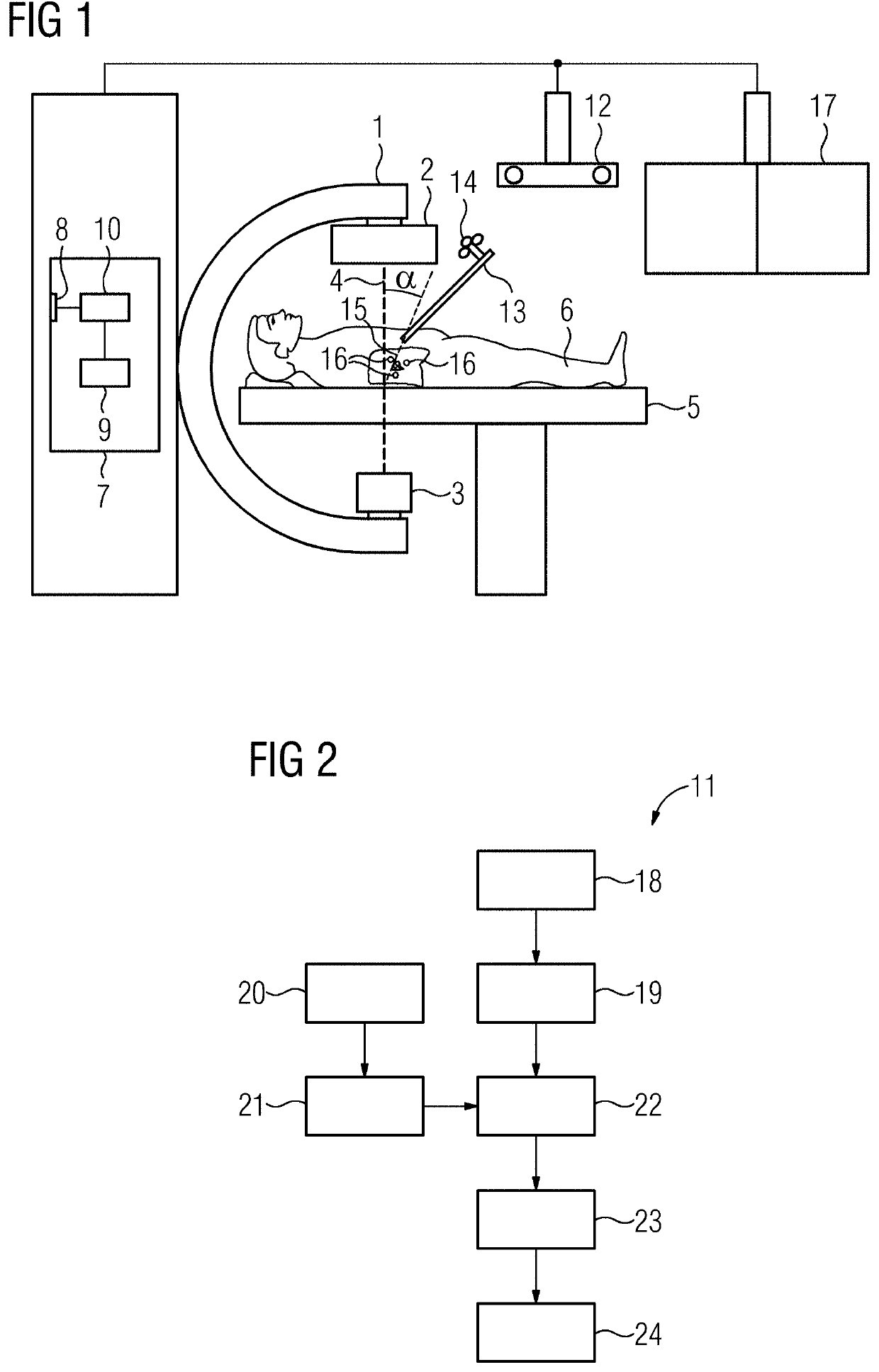Method for supporting a user, computer program product, data medium and imaging system
a technology for imaging systems and users, applied in the field of supporting users, can solve problems such as inaccuracy or uncertainty in registration, disadvantageous consequences, etc., and achieve the effects of improving or maximizing the positioning accuracy of instruments, less adverse effects on target objects, and greater accuracy or reliability
- Summary
- Abstract
- Description
- Claims
- Application Information
AI Technical Summary
Benefits of technology
Problems solved by technology
Method used
Image
Examples
Embodiment Construction
[0058]The exemplary embodiments explained below are variants of the invention. In the exemplary embodiments, the components of the embodiment variants, as described, represent in each case individual features of the invention, being regarded as independent of each other. The features respectively develop the invention independently of each other likewise and are therefore also to be considered as constituents of the invention individually or in a combination other than that shown or described. The embodiment variants as described may also be supplemented by further features of the invention described above.
[0059]FIG. 1 shows a schematic representation of one embodiment of an imaging system 1 configured as, for example, a C-arm X-ray device. The imaging system 1 in this case has a radiation source 3 and a detector 2 for detecting X-radiation emitted by the radiation source 3. Using the X-radiation (e.g., by the imaging system 1), a target object may be depicted along or in a recordin...
PUM
 Login to View More
Login to View More Abstract
Description
Claims
Application Information
 Login to View More
Login to View More - R&D
- Intellectual Property
- Life Sciences
- Materials
- Tech Scout
- Unparalleled Data Quality
- Higher Quality Content
- 60% Fewer Hallucinations
Browse by: Latest US Patents, China's latest patents, Technical Efficacy Thesaurus, Application Domain, Technology Topic, Popular Technical Reports.
© 2025 PatSnap. All rights reserved.Legal|Privacy policy|Modern Slavery Act Transparency Statement|Sitemap|About US| Contact US: help@patsnap.com

